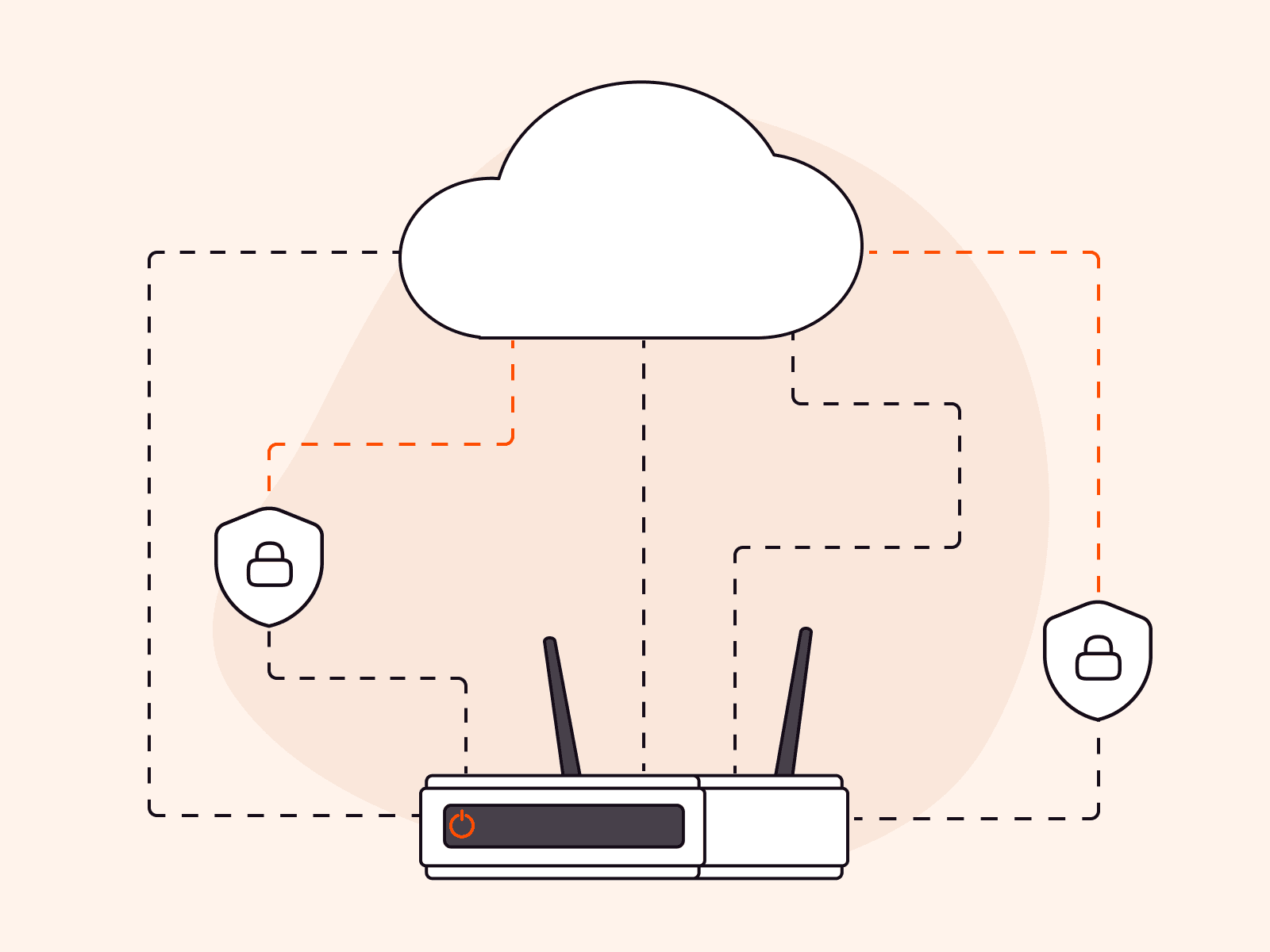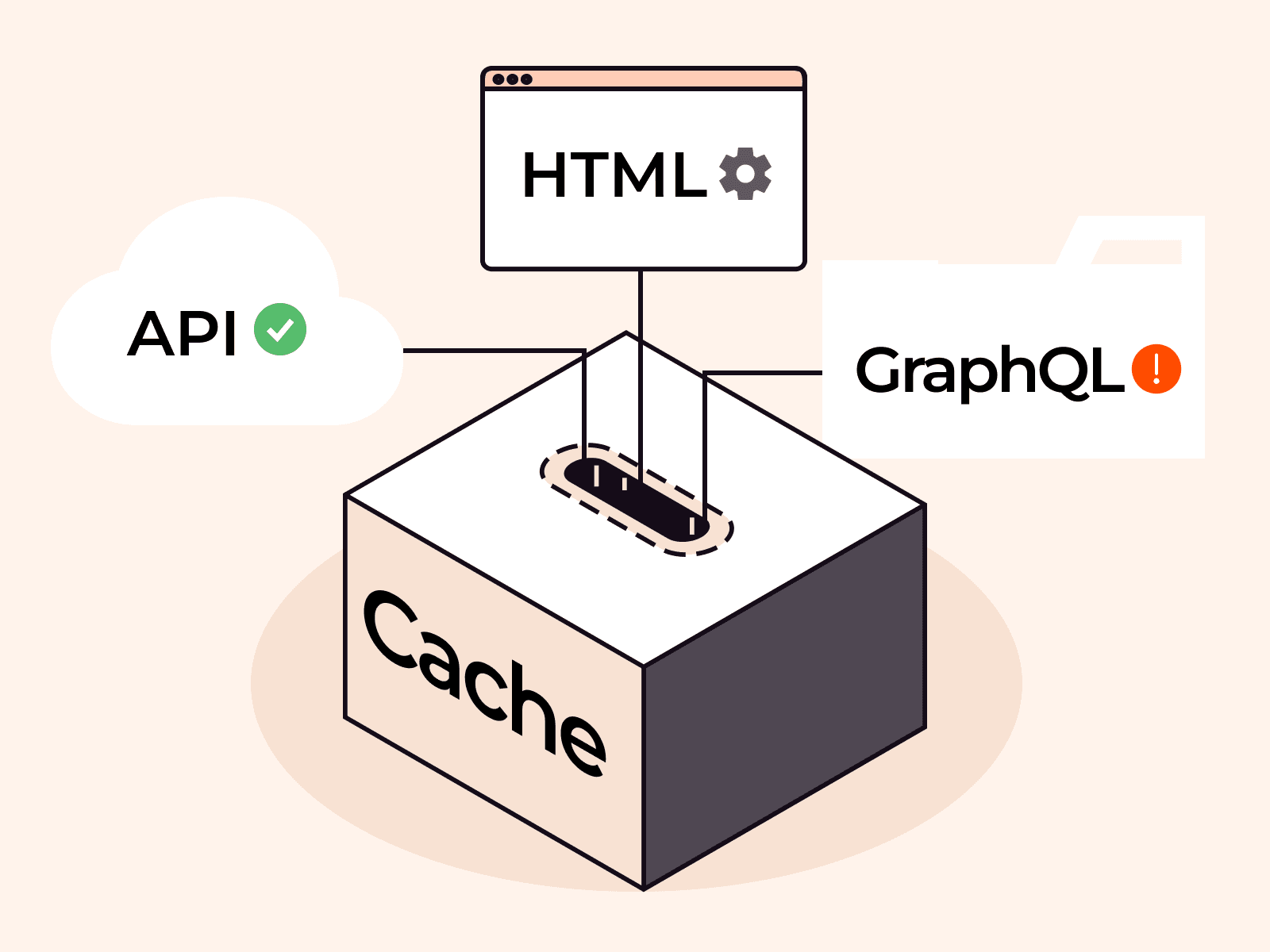High load speed is important for almost any web resource. Fast load improves user experience and increases the engagement rate, which results in increased conversion. This conclusion comes from many modern studies.
Yet website load speed is a pretty broad concept that includes many different metrics. TTFB (Time To First Byte) is one of them.
Let’s discuss what this metric means, how important it is, and how we can measure and improve it.
What is Time To First Byte?
Time To First Byte is a period of time between sending a request to the server and receiving the first byte of information from it. Some sources call this metric the Server Response Time.
During this time period, the client and the server perform the following actions:
- The client sends a request to the server.
- The server receives the request and processes it.
- The server sends a response to the client.

What TTFB consists of
This parameter can be measured for the entire page as well as for any of its elements. Different elements can be downloaded from various sources, resulting in different server response time. Yet most TTFB measuring tools show the time that passes until the first byte of the entire page is received.
What is influenced by TTFB
TTFB is a very important metric. Many other parameters including the website load speed depend on it. It means that:
- TTFB affects conversion. A recent study has found that every extra second spent by the users waiting for the site to load reduces the conversion rate by 4.42%.
- TTFB affects the website’s search ranking. Neil Patel, one of the leading Internet marketing experts, has found in his research that low TTFB directly correlates with the website’s chances to enter the first SERP positions.

Top 30 pages in Google Search: The role of TTFB
Apart from TTFB, there are hundreds of other factors that affect SEO and conversion rates. But we believe that this factor is also very important and shouldn’t be overlooked. Improving this metric is one of the key steps to improving your website ranking and user experience.
What TTFB depends on
TTFB involves the time required to transmit a request and a response over the network, and the time needed to process the server request. Hence, all factors affecting the metric can be divided into two types.
1. Network and content delivery specifics:
- Distance from the client to the server. The larger the distance, the longer it will take the request to reach the server.
- Routing. To deliver the request and the response quickly and successfully, it is important to build the shortest route for them.
2. Web server settings and parameters:
- Server capacity. The server must be capable of processing requests and forming responses quickly. To avoid delays, the hardware must be able to easily cope with the existing load.
- Settings optimization. The request processing speed can slow down due to wrong server settings, e.g., because the buffer is too small or because the timeout settings are incorrect.
- Work with databases. If the server needs to retrieve information from the databases and load it to the website page, it also takes some time. This time is included in the TTFB.
- API calls. Some web resources need to call different APIs to load the website pages. This time also affects TTFB.
- Content type. Returning static content usually takes less time than returning dynamic content. It takes some time to form a dynamic content request. Also, such content type often can’t be cached. This means that the browser will need to send a request to the server every time. When it comes to static content, some pieces of the information can be taken from the cache, and the first byte will be loaded faster.
What TTFB should be like
Most experts recommend that the TTFB value shouldn’t exceed 100–200 ms. But in some cases, it is possible to achieve the level of 50–100 ms.

Neil Patel whose study we mentioned above characterizes the TTFB values in a similar way.

TTFB values and their meaning
According to Google’s recommendations, TTFB shouldn’t exceed 600 ms. If your website has a higher TTFB value, it is advisable to start improving this parameter as soon as possible.
How to measure TTFB
There are many different speed measurement tools, including the ones meant for TTFB.
Waiting (TTFB) in Google Chrome
You can check the TTFB value on your own in the Google Chrome browser. It is very convenient to use, and the information is shown for each loaded page element individually.
- Open the page in the Google Chrome browser.
- Head to More Tools > Developer Tools or use the following key combinations: F12 or Ctrl+Shift+I (Alt+Cmd+I for Mac).
- Go to the Network tab.
- Refresh the page to see real-time loading statistics for each element.

How to check TTFB in Google Chrome
Click on one of the requests and switch to the Timing tab. You will see the TTFB value for this request.

Where to find the TTFB value in Google Chrome
Alternatively, you can just hover your mouse over the diagram opposite the request in the Waterfall section and you will see the same information.
Google Analytics
If you are already using Google Analytics, the easiest solution for you will be to use this tool. There is no need to look for any third-party apps.
- Head to the Behavior section.
- Go to Site Speed.
- Click on Overview.

TTFB in Google Analytics
WebPageTest
This is yet another simple website speed measuring tool.
1. Set the parameters. Paste the link to your website and specify your location and your browser on the main page. Then click on the Start Test button.

How to measure TTFB using WebPageTest
Specifying your test location is necessary because the tool needs to know where the request will come from. The results for different locations will vary. For example, if your server is located in Germany, and the request comes from China, it will take longer for such a request to reach the server than for a request coming, say, from France. That’s because the distance between Germany and China is bigger.
2. Take a look at the result. When the analysis is complete, head to the Details section. At the top of the page, you will see a metrics table. TTFB will stand on the first place.

Checking website load speed using WebPageTest: General results
3. Analyze the detailed information. On this page below, you will see information about each request. You can click on any request and get detailed data about it.

Request details in WebPageTest
TTFB test by Geekflare
This is a special test used to check how much time actually passes until the first byte of information is received. This is the simplest tool ever. All you need to do is paste a link to your website into a special field and click on the TEST TTFB button. The result will look as follows:

Checking TTFB using the TTFB Test by Geekflare
We’ve enlisted the most popular and convenient tools, yet there are more. Nowadays there are a lot of speed testing services. You can choose the one that suits you best.
How to reduce TTFB
There are quite a lot of recommendations to give, and all of them will depend on the situation. We’ll enlist the key points to consider.
- Connect CDN. CDN shortens the distance between the client and the server and speeds up content delivery. It is important that a fast DNS should be used together with the CDN.
- Try to reduce the number of the requests sent to the server. Transfer data using the HTTP/2 protocol, combine several files into one, use CSS sprites and other techniques.
- Place the domain names on the DNS servers that are the closest to the users. To send a request to the server, the browser needs to obtain its IP address first. To achieve this, the browser connects with the DNS server. The shorter the distance to the DNS server, the faster the IP data will be received.
- Change server settings. Increase the size of the buffers, configure your caching policy, and change timeout settings. You can find many publicly available guides that describe the web server settings configurations in detail but we advise that you assign this task to an experienced specialist.
- Upgrade to a more powerful hardware. Your server may fail to cope with the current load, and you may need a more powerful equipment.
- Optimize your work with databases. If your server needs to connect with a database before sending a request, check how quickly it receives the required data. Optimize database requests, configure the indexes, and cache the responses to the most frequent requests.
For more information on how to reduce server response time, read our article “How to increase your web resource speed”.
Summary
- TTFB (Time To First Byte, or server response time) is the period of time between the moment when the request is sent to the server and the moment when the first byte of information is received from the server.
- TTFB is an important website load speed metric. It affects other speed metrics, thus influencing the conversion rate and SEO.
- The server response time is influenced by many factors; primarily, by how fast the data are transferred over the network as well as by server configurations, server load, the necessity to work with databases and API, and the content type.
- According to Google’s recommendations, TTFB shouldn’t exceed 600 ms. But even if on your website this value is lower, you may still need to improve it. There is no limit to perfection.
- There are many tools for measuring TTFB. The most popular and convenient ones include Google PageSpeed Insights, Google Analytics, WebPageTest and the TTFB Test by Geekflare.
- To reduce TTFB, you need to make your server process the requests faster and to speed up the process of transferring data over the network. One of the methods to achieve this is enabling CDN.
Gcore CDN provides excellent content delivery speed. The total capacity of our network exceeds 75 Tbps, and the average response time around the world is 30 ms.
We have a free plan and a 14-day free trial period for advanced plans. Connect our CDN and speed up your website efficiently.
Related articles
Subscribe to our newsletter
Get the latest industry trends, exclusive insights, and Gcore updates delivered straight to your inbox.






